Papace, or Grey Partridge n.d.
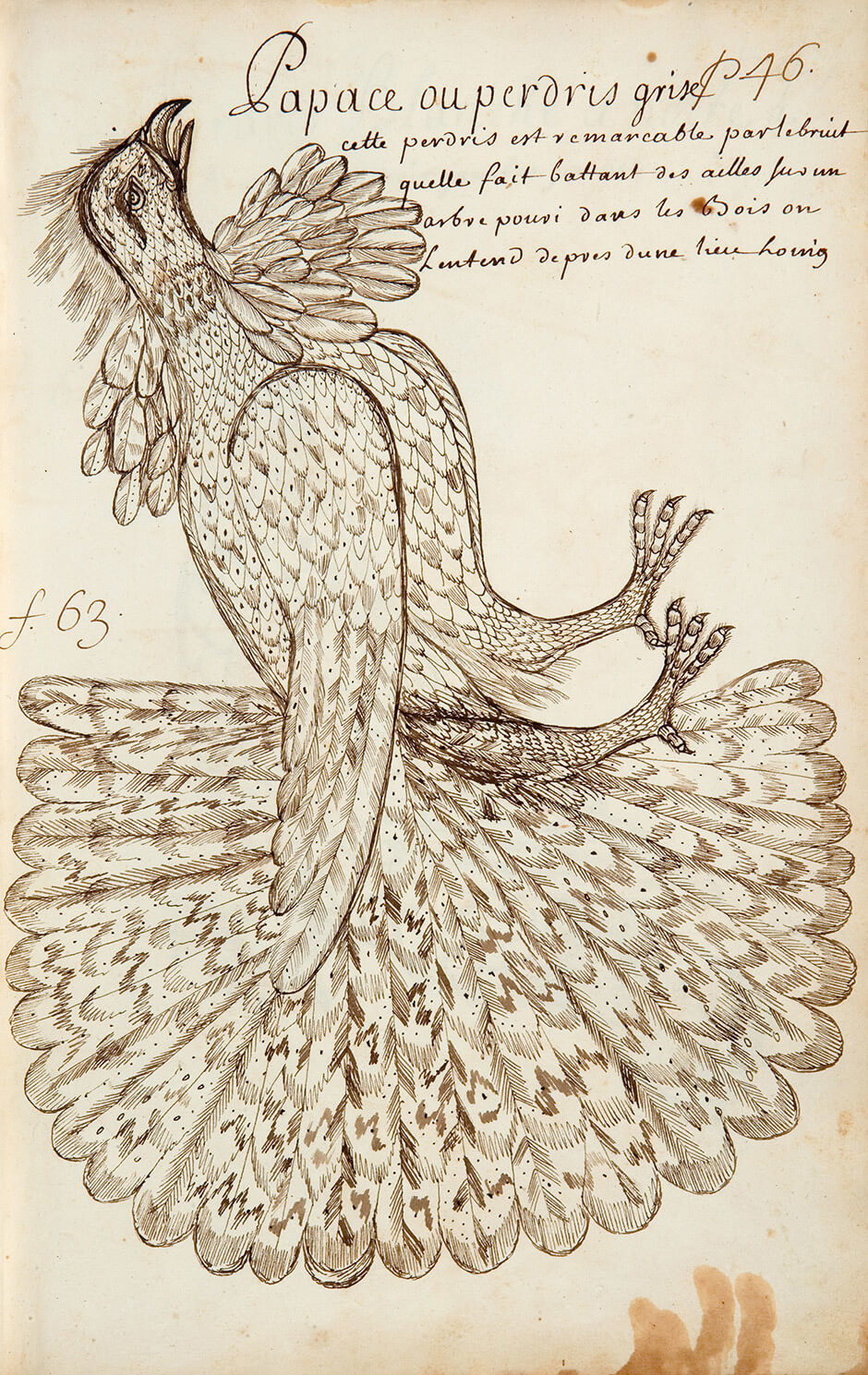
Louis Nicolas, Papace, or Grey Partridge (Papace ou perdris grise), n.d.
Ink on paper, 33.7 x 21.6 cm
Codex Canadensis, page 46
Gilcrease Museum, Tulsa, Oklahoma
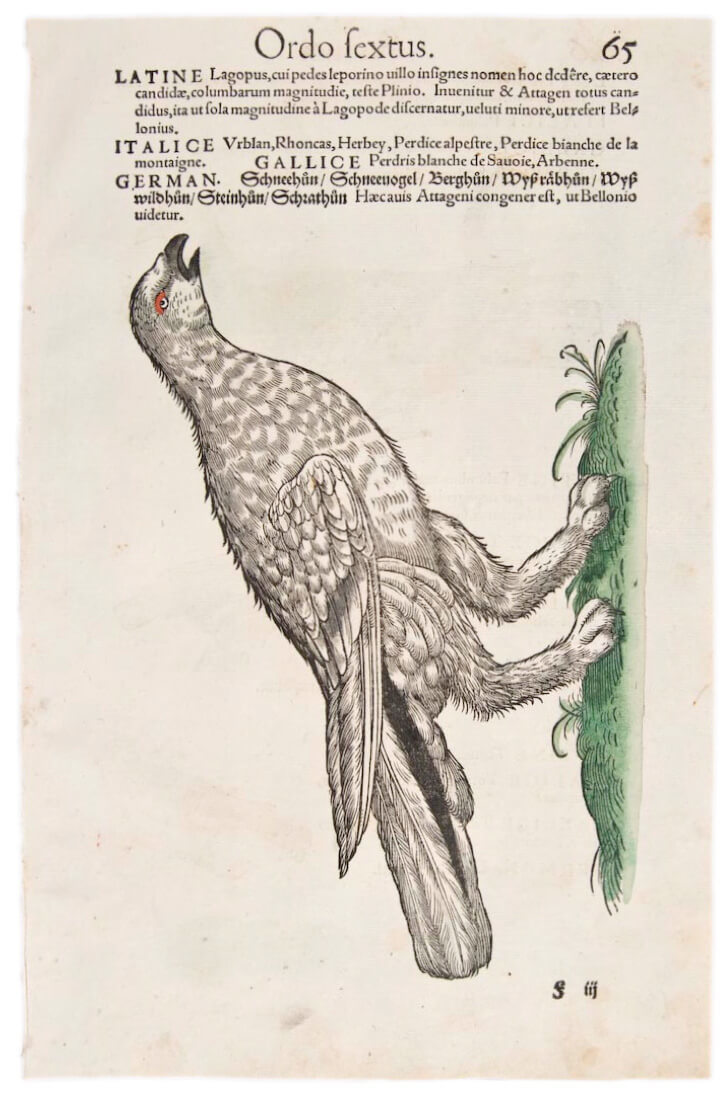
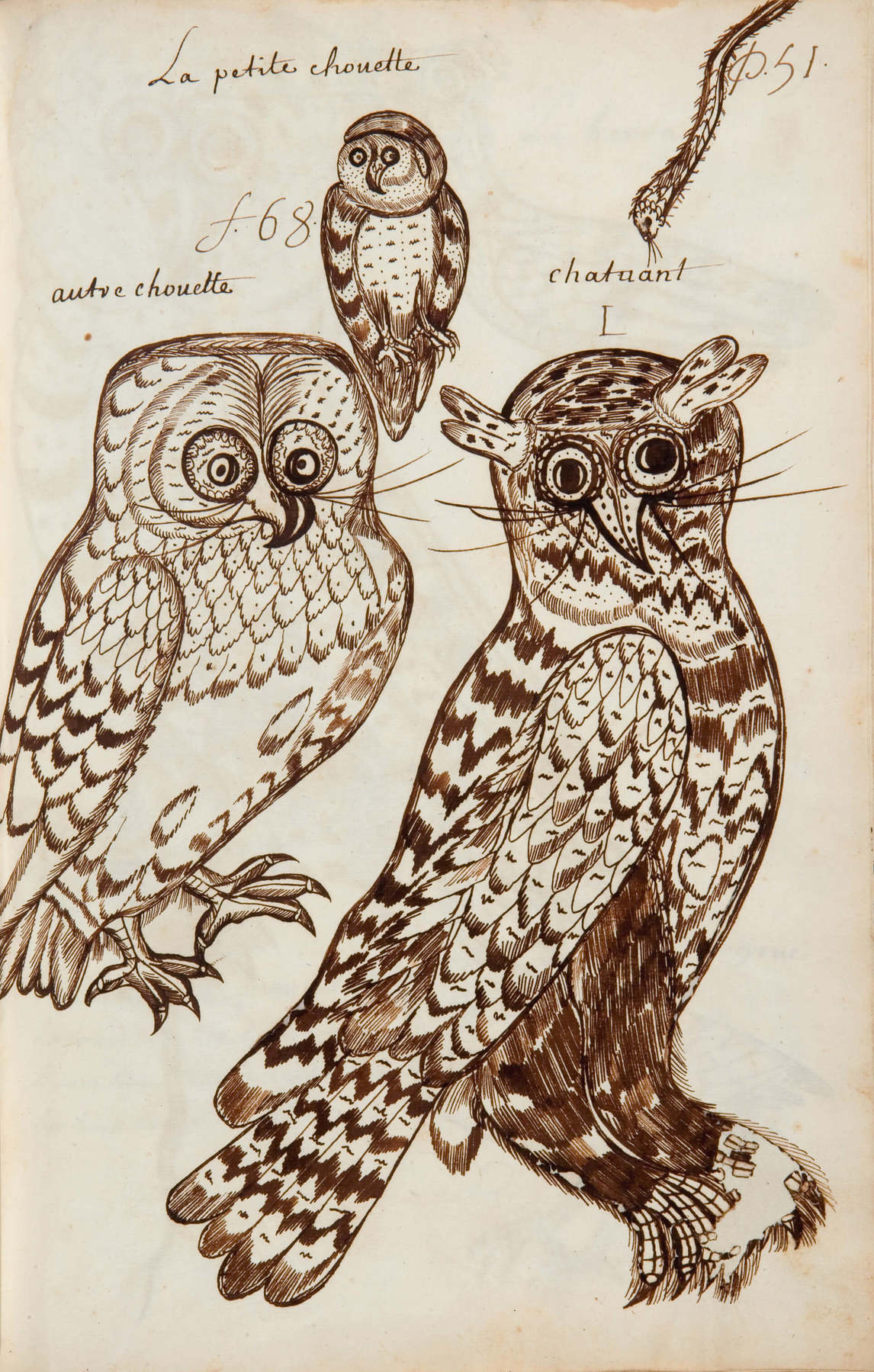
This illustration shows how Nicolas used European sources to depict a North American bird. The caption states that the “Papace, or grey partridge” is remarkable for the noise it makes “beating its wings on the rotten tree in the woods. It can be heard almost a league away.” This precise description applies well to the ruffed grouse, Bonasa umbellus, a bird that lives in an area ranging from the Appalachian Mountains across Canada to Alaska.
As his model for this magnificent creature, Nicolas used an engraving of a ptarmigan that he found in The History of Animals, Book Three, That Is of the Nature of Birds (Historiae Animalium Liber III qui est de Avium natura) (1555) by Conrad Gessner (1516–1565). He took a lot of freedom with his model, drawing on his own observations in the field and including many other details. He added feathers on the head and around the throat of the bird to give it the famous ruff that inspires the name. A magnificent tail replaces the rather plain one of the model, while the legs bear no feathers.
In this striking drawing, Nicolas demonstrated his fine skill as a draftsman in pen and ink. To achieve the accuracy and realism he wanted, he rendered the markings on the feathers and the legs in varied and finely wrought quill strokes. This drawing is, in fact, less fanciful than Nicolas’s much-admired representations of owls (pages 51 and 52). The “Coucoucouou” (so named in imitation of its call) is probably the Great Grey Owl, Strix nebulosa, pictured with a long-tailed mouse in its claws.

 About the Author
About the Author
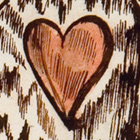 More Online Art Books
More Online Art Books
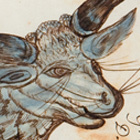 Acknowledgements
Acknowledgements